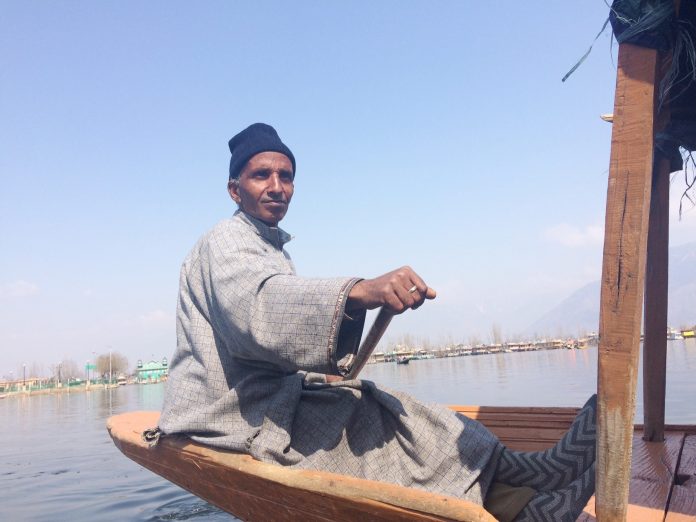By Raqib Hameed Naik, TwoCircles.net
Srinagar: From all over the country and the world, people flock to Kashmir to witness its beauty, picturesque landscape and snow-capped mountains. The first thing any tourist visiting Srinagar is likely to do, is take a stroll around the calm and peaceful Dal Lake.
Often called the “Jewel in the crown of Kashmir” and sometimes “Srinagar’s jewel”, the lake has been a source of income for hundreds of people who own Shikaras, traditional wooden boats, and ferry tourists for sightseeing in and around the lake.
Mostly dependent on tourists flocking the valley in summers, the Shikara owners have been silently enduring the brunt of conflict and protests time and again.
And even as the Valley attempts to return to normalcy following seven months of unrest, the people dependent of ferrying tourists on these Shikaras believe that it will be a long period before their fortunes improve.
‘Violence in 2016 will affect business this year’
It is 10 in the morning and Ghulam Mohammad Mattoi, 60 who lives in Karpur area of Nehru Park Srinagar is looking for customers for a Shikara ride in the lake. He has a family of five and been rowing a Shikara for the past 40 years. During normal times, Mattoo used to earn Rs 6,000-Rs 8,000 a month, but the unrest in 2016 had forced him to take borrow money even for buying groceries.

“I have witnessed the militancy in 1990s and successive unrests, but instead of things improving, the situation is deteriorating day by day. Shikara walas lose everything with these protests because we have only
six months of summers to earn and use that income during winters when usually less number of tourists come,” says 60 year old Mattoo.
As Mattoo rows his boat past Hotel Leeward, which houses CRPF personnel in Dal Lake, his face looks more intense. He says, “We didn’t knew that the situation will deteriorate so much in 2016. It did happen in 2010 but
2016 was something very different. The oppression was extreme.”
Mattoo says that some of his fellow boatmen have shifted to work as laborers and he also thinks of working as a laborer, but fears that at his age, he won’t be able to bear it.
Umar Dar, 17 is from the north Kashmir town of Palhallan, which witnessed large-scale protests in 2016. He rows the boat for a jeweler who sells Kashmiri jewelry to the tourists in the Lake. Umar left studies midway to support his family of four. The “unrest” has left him without any work.

“Tourist doesn’t come to Kashmir, when there are protests and media blows it out of proportions. The excessive force here also discourages people from coming again ,”he says.
Umar is much concerned about the coming summer season, as he anticipates another round of unrest and he feels that it will bring doom to the Shikara industry in the valley.
Gulzar Ahmed, 72 another boatmen comes to the shore every morning in search of tourists, but says that the income is highly uncertain on most days. He says that he can’t even work as daily wager laborer due to his age .
“I can only sit and wait for things to get normal ,”he said. Gulzar adds that the repercussion of 2016 unrest will be seen in businesses during 2017.

“Whenever protest and killings happen, it takes two long years to get our business back to normal again. The protests in 2016 doomed the business for the whole year and very less tourists will turn up the following year fearing for their safety ,” he explains.
With the killings of three more youths in Chadoora area of Budgam District during an encounter on Tuesday, March 28 has renewed the fears in the valley of another summer of turmoil, as the hopes from the new governments both in the center and the state has diminished to an all-time low.
“If the valley witnesses another rounds of protests, then it will bring permanent doom to our business and will forces many to quit and switch on to work as laborers,” fears Matoo.


